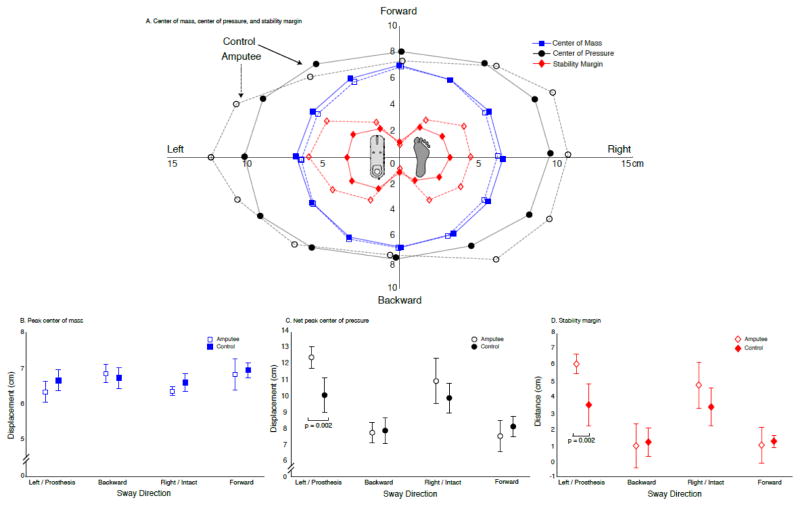Figure 2.
Whole-body reactive balance responses to multi-directional support surface translations. A: Peak center of mass displacement (blue squares), peak net center of pressure excursion (black circles), and stability margin (red diamonds) averaged across subjects (transtibial amputees: unfilled; controls: filled) for all 12 sway directions. B: Peak center of mass displacement (mean ± 1SD) across the four cardinal directions for transtibial amputees (unfilled) and controls (filled). There was no significant difference in the magnitude of whole-body displacement between individuals with limb loss and controls, or across directions within either cohort. C: Peak net center of pressure excursion (mean ± 1SD) across the four cardinal directions for individuals with transtibial limb loss (unfilled) and controls (filled). Individuals with transtibial limb loss had significantly larger net center of pressure excursion in response to lateral sway that loaded the prosthetic leg (p = 0.002) than controls. D: Stability margin (mean ± 1SD) across the four cardinal directions for individuals with transtibial limb loss (unfilled) and controls (filled). Individuals with transtibial limb loss had a significantly larger stability margin during lateral sway that loaded the prosthetic leg (p = 0.002) than controls.

